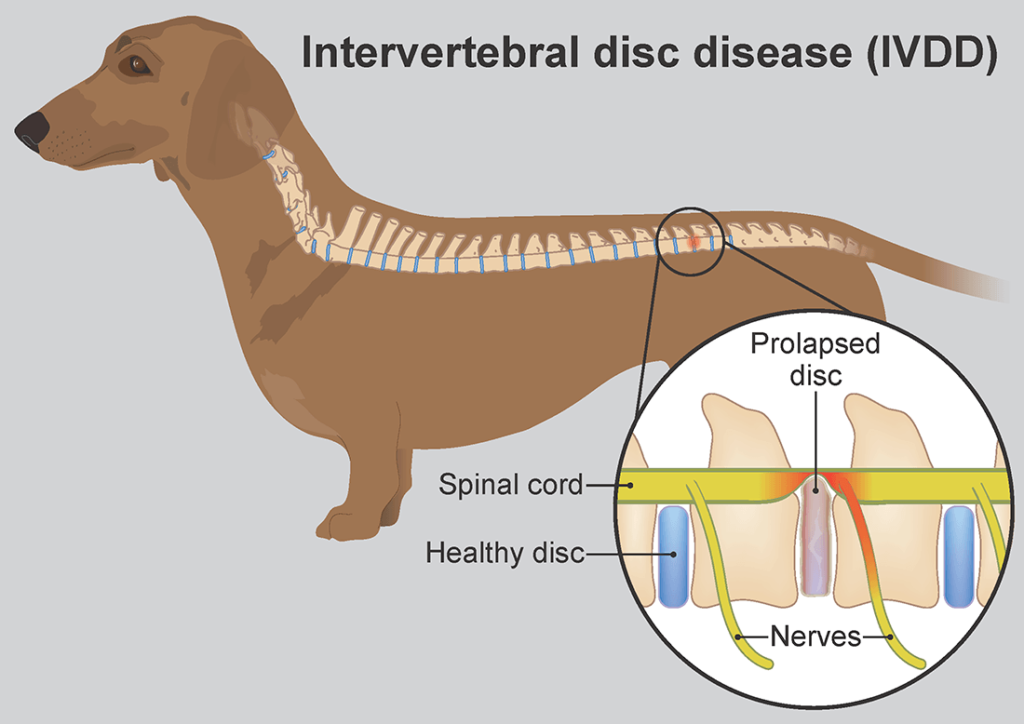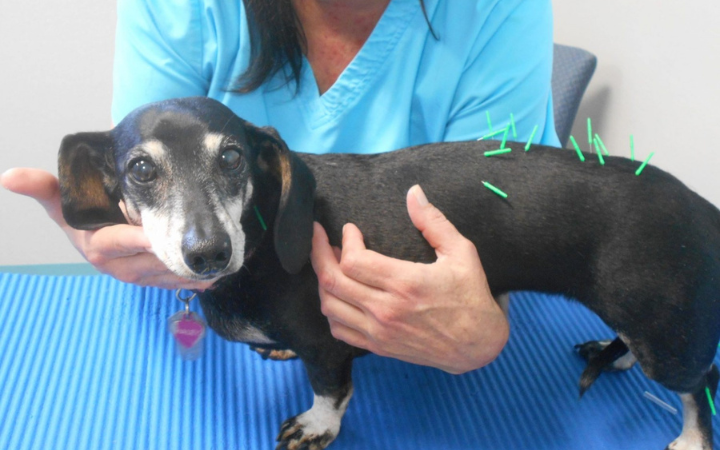Dachshunds unique body shape and structure can put them at risk for a number of health problems, including Intervertebral Disk Disease (IVDD). IVDD is a common and potentially debilitating condition that affects the spinal discs in dachshunds. In this article, we will discuss the causes, symptoms, and management of IVDD in dachshunds, and how to prevent this condition from affecting your pet.
What is Intervertebral Disk Disease (IVDD)?
Intervertebral Disk Disease (IVDD) is a condition in which the cushioning discs between the vertebrae in the spine become damaged, ruptured or herniated. This can cause the discs to put pressure on the spinal cord, leading to pain, weakness, and even paralysis. IVDD is a common problem in dachshunds, as their long backs and short legs can put added stress on the discs.
Causes of IVDD in Dachshunds
There are several factors that can contribute to the development of IVDD in dachshunds. These include:
Genetics: IVDD is believed to have a genetic component, and some dachshunds are predisposed to developing this condition.
Obesity: Overweight dachshunds are at an increased risk of developing IVDD, as the extra weight puts additional stress on the discs.
Age: IVDD is most commonly seen in middle-aged to older dachshunds, although it can occur in younger dogs as well.
Trauma: Accidents, falls, and other traumatic events can cause damage to the discs and increase the risk of IVDD.
Symptoms of IVDD in Dachshunds
Depending on the condition’s severity, the indicators of IVDD in dachshunds might vary, however some typical symptoms include:
Pain: Dogs with IVDD may exhibit signs of discomfort, such as whining, growling, or panting.
Weakness: Dogs with IVDD may have difficulty standing or walking, and may appear unsteady on their feet.
Paralysis: In severe cases, dogs with IVDD may experience partial or complete paralysis in their hind legs.
Loss of appetite: Dogs with IVDD may lose their appetite due to pain or discomfort.
Diagnosing IVDD in Dachshunds
If you suspect that your dachshund may have IVDD, it is important to seek veterinary care as soon as possible. Your veterinarian will perform a physical examination and may recommend diagnostic tests, such as:
X-rays: X-rays can assist your veterinarian in determining the degree of disc damage and in ruling out any further causes of discomfort or paralysis.
MRI: An MRI is a more detailed imaging test that can provide a better view of the discs and spinal cord.
Myelogram: A myelogram is a specialized test that involves injecting a special dye into the spinal canal and taking X-rays to determine if there is any pressure on the spinal cord.
Treating IVDD in Dachshunds
The severity of the problem will determine how to treat IVDD in dachshunds. Treatment choices could be:
Medical Management: Medication may be administered to treat pain and inflammation in IVDD patients with mild instances. This could involve using steroids, nonsteroidal anti-inflammatory medicines (NSAIDs), or other painkillers.
Surgery: Surgery can be required in extreme circumstances to remove the injured disc and release pressure on the spinal cord. Depending on each dog’s situation, the type of surgery may be a discectomy, spinal fusion, or laminectomy.
Rest and Rehabilitation: After therapy, dogs with IVDD must rest and exercise moderately to allow the spinal cord to repair. Exercise and physical therapy may be suggested in some circumstances to assist increase strength and mobility.
Preventing IVDD in Dachshunds
You can take the following actions to help prevent IVDD in your doxie:
Maintaining a healthy weight: Keeping your dachshund at a healthy weight will help reduce stress on the discs and lower the risk of IVDD.
Limiting rough play: Jumping and hard play can put greater strain on the discs, therefore it’s important to steer clear of them.
Providing a supportive bed: A supportive and comfortable bed will help distribute your dog’s weight evenly and reduce stress on the discs.
Regular veterinary check-ups: Regular veterinary check-ups will help catch any potential problems early and allow for prompt treatment.
Conclusion
Intervertebral Disk Disease (IVDD) is a common condition in dachshunds that can cause pain, weakness, and even paralysis. With proper treatment and management, many dogs with IVDD can make a full recovery. By taking steps to prevent IVDD and seeking veterinary care as soon as symptoms appear, you can help ensure the best possible outcome for your pet.






3 thoughts on “Managing Dachshund Intervertebral Disk Disease (IVDD)”